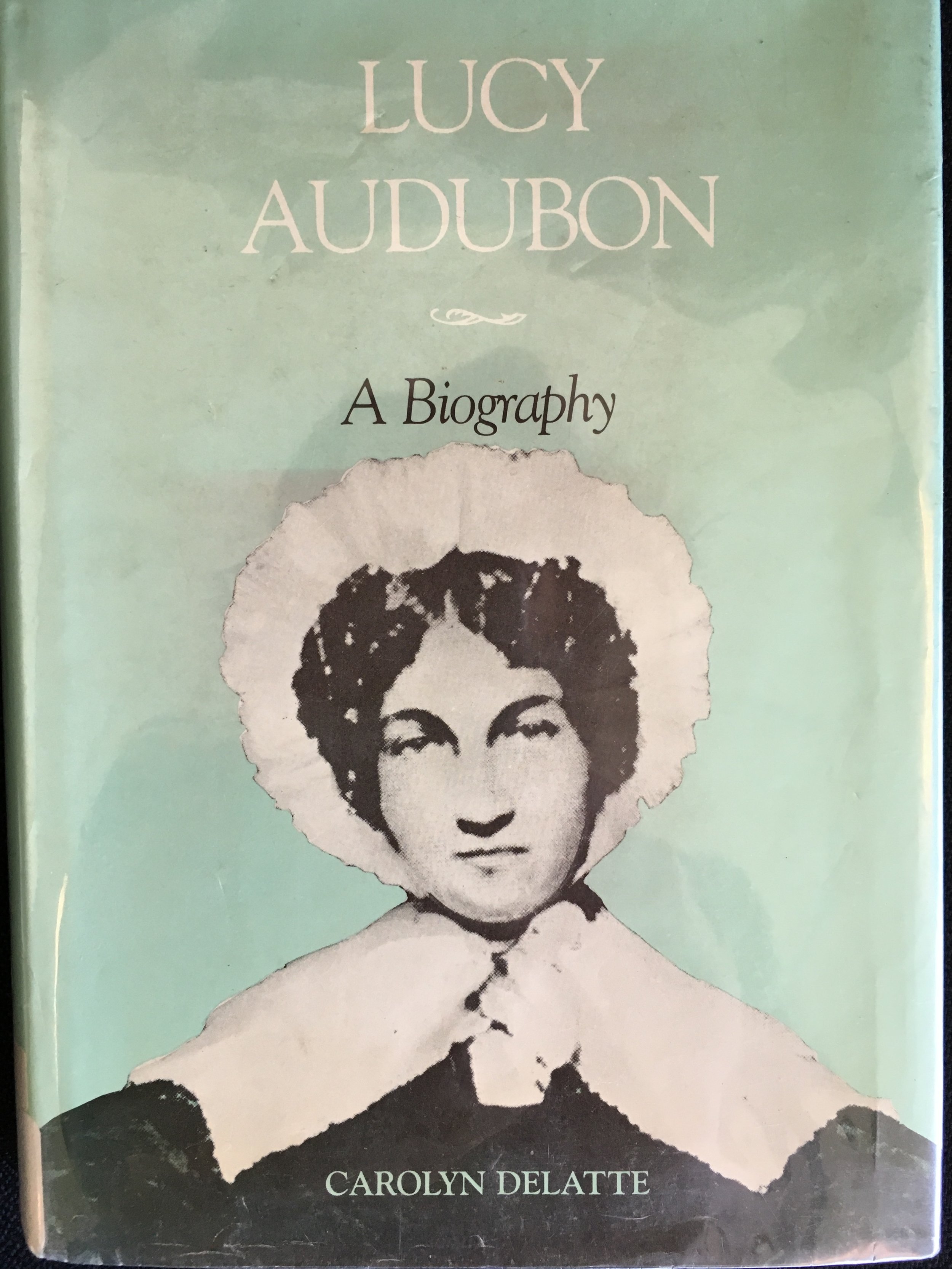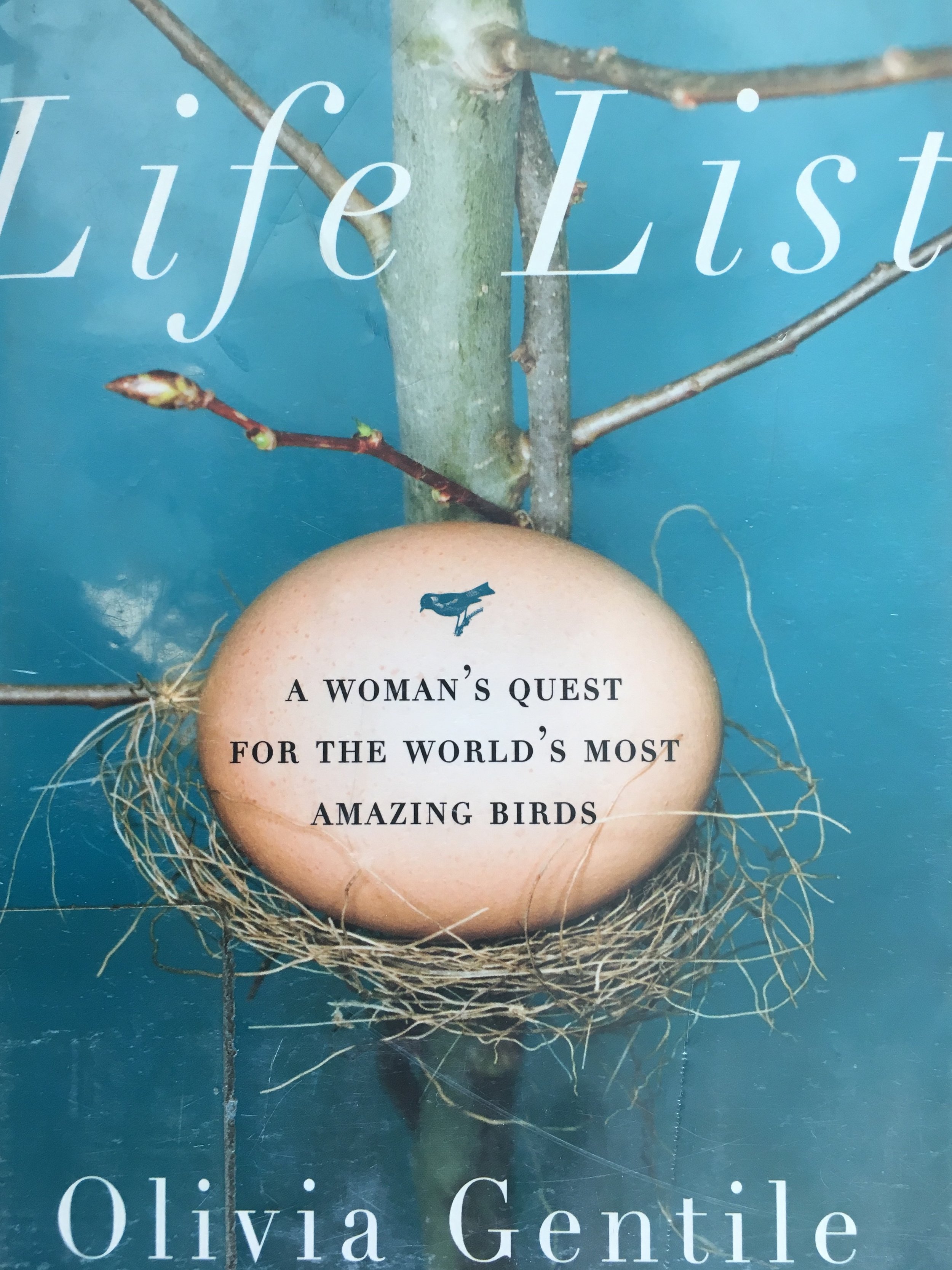I love a deep dive into the life of another, especially another woman. The lives of women are fascinating to me and that should come as no surprise to you considering the content I write here.
How about you? I’m guessing you’re interested in other women in this scene, too? I happen to love a history of a woman in any context, so hoping these books might appeal to anyone getting into birding, let alone someone who is already an avid birder. Call these “gateway books”!
So next up in this on-going series of books by and about women and birding are several biographies I want to recommend.
First, though, I have to call out some deep voids. The biographies in this niche suffer from both a lack of diversity of their subjects and a variability of page-turning momentum of their writing. The American birding scene has for most of its history been a past time of the white upper middle class and these biographies reflect that narrow demographic.
The first two books (Lucy Audubon and Florence Merriam Bailey) have a dissertation-like writing style which make them less of a pleasure read, though both are thoroughly researched and the writing fine (Lucy Audubon was originally Carolyn Delatte’s dissertation; revised for a general audience).
But as an advocate for all women in the birding world, I hope for more readership in order to know the woman on the cover and honor the woman who dedicated her time to write the book. Loving birds takes special something that I find fascinating and drove me to read these books and recommend them.
So get reading!
Lucy Audubon: A Biography, by Carolyn Delatte
Lucy Bakewell Audubon met her husband, the now famous John James Audubon, when he was a swash-buckling back-woodsman with a romantic French accent and dreams of producing wildlife art to support himself. She knew what she was getting into when marrying him, and not only toughed out a life on the frontier (then Kentucky and Louisiana), but raised two sons and paid down family debts through working as a governess, all while enduring long absences of her bird-seeking husband.
The comic above shows a sensitive portrayal of both her loyalty to her husband’s passion, but also a frustration and pain for feeling second fiddle to his need to travel in order to research, paint and then sell his eventual project, The Birds of North America. It was not until middle age that the Audubons found comfort and stability in life, and even then the drama wasn’t over. As Delatte argues, Lucy Audubon should be credited with sustaining her family’s legacy after the death of her husband and sons (she outlived them all), and laying the foundation of today’s rote association of the Audubon name with bird conservation.
No Woman Tenderfoot: Florence Merriam Bailey, Pioneer Naturalist, by Harriet Kofalk
Kofalk writes this thorough if dry biography of an early pioneer in birding and ornithology, before the two were clearly defined as practice. Florence Merriam Bailey herself was a prolific and gifted natural history writer, and the quotes from her writing in this book bring her to life more than the book itself.
Merriam Bailey’s writing from her book “A-Birding on a Bronco” evoke Southern California when it was still an oak-filled landscape of rolling hills with the buzz of insects in language that feels surprisingly modern for an Edwardian woman.
And she was a remarkable woman for her time, mentor to many (she never had children of her own), chronicler of bird species and responsible for the first illustrated birding field guide in 1890 (as its author, not the artwork), “Birds Through an Opera Glass,” a first reference book in making birding accessible and mainstream to non-scientists.
Both her field guide and memoir of California were written before she was married, under her maiden name Florence Merriam. Her fortitude was helped by the financial comfort of her upper middle-class upbringing, and later her marriage to fellow naturalist Vernon Bailey.
Marriage did not slow her work trajectory, either. Merriam Bailey helped establish several local bird conservation groups (later known as Audubon Society chapters), advocated for an end to the feather trade, wrote and co-authored more books and spent years in field research in partnership with her husband. It’s astonishing to me that she died in 1948, having accomplished the bulk of her life’s work before the turn of the 20th Century.
If you haven’t read my statement for the books I pull together, take a look at my first book round up on this series. Also, this post contains affiliate links to IndieBound, a nice alternative to amazon for your book buying needs. A purchase here will give me a small commission and I thank you in advance for the consideration!
Rosalie Edge, Hawk of Mercy: The Activist Who Saved Nature from the Conservationists, by Dyana Z. Furmansky
If ever you wanted an education on the discord and intrigue among early conservation organizations in the US, this is your book. Through the life of Mabel Rosalie Barrow Edge—who is credited with establishing Hawk Mountain Sanctuary in eastern Pennsylvania, the world’s first refuge for birds of prey—Furmansky outlines how one woman and her small team challenged the public and private conservation establishment to actually DO the work of conservation.
Edge came to conservation work in her 50s, and a good third of the book details her life leading to that point, with a minor but mostly latent interest in birds and nature. Born into wealth in New York City in 1877, Edge married in her early 30s and quickly became a mother.
It was the dissolution of her marriage and the well timed arrival in 1929 of a pamphlet entitled “A Crisis in Conservation,” authored by dissenting members of the then-named National Association of Audubon Societies (NAAS), which kick started her conservation fervor. She decided to use her stature and wealth to align with the authors of the pamphlet in order to give their effort some heft, and she never looked back. She soon became the face of the movement challenging the status quo of complacency in the conservation scene of the time, organizing, petitioning, writing, agitating and inciting.
The lesson of this book is that not every hero is likable. Edge changed history with her role in preserving Olympic National Park (in my home state of WA), and expanding the areas of other national parks, but she took no prisoners and burnt bridges, including with her own family members. Passion can drive significant results, but it can also drive people away. Edge clearly chose her path, and had guts to do so.
Life List: A Woman’s Quest for the World’s most Amazing Birds, by Olivia Gentile
Each of these women diverted from the norms of their respective eras. Though she’s the most recent example of this female rebellion, Phoebe Snetsinger’s experience feels to me the most transcending of time and space for the years she lived. Her experience marks the huge leaps of access and inclusion made by women in the 20th century among all areas of society, which I consider remarkable for the acceleration of pace in terms of years from the 1950s to where we are at present, a time in which women have many more options and the agency to speak our minds.
Snetsinger was born to an upper middle class (see a pattern here?) Chicago family, the daughter of the advertising giant, Leo Burnett. Her life echoing the experience of other curious, college-educated, intelligent women of her era, Snetsinger’s formal education in science was useless once she graduated, as all such jobs went to men.
Her lot in life in 1958 (when she became pregnant with her first child) was to be a mother and housewife prioritizing her husband’s career over any ambition she might have. Even if her husband Dave had supported such a plan, “which he well might have,” writes Gentile, “most people would have thought her irresponsible and weird.”
Snetsinger found birding once her children were older, and quickly mastered her local scene. Her science background gave her focus and confidence for study and observation and the pastime grew into a passion. Two things gave Snetsinger her singular focus to be the most-listed birder in history: a terminal cancer diagnosis and the death of her father. With a time stamp on her life and her a generous inheritance, she traveled the world counting birds, eventually reaching 8,000 species (which is when she stopped counting).
Gentile is a masterful biographer (if her name is familiar, it’s because she wrote this recent viral article about women in birding) and I prefer this book to Snetsinger’s own memoir, Birding on Borrowed Time, which is also strong, but lacks the perspective of outside input that Gentile gathered from family and friends. Of the books presented here, this is easily the most readable, with tension like a novel. Gentile has got the memo about modern day readers wanting their nonfiction to be as exciting as their fiction. She delivers without any compromise to scholarship.
Thank you for reading! Stay tuned for more in this series of books by and about women in the birding scene.
And a reminder, this post contains affiliate links to IndieBound, a nice alternative to amazon for your book buying needs. A purchase here will give me a small commission and I thank you in advance for the consideration!




